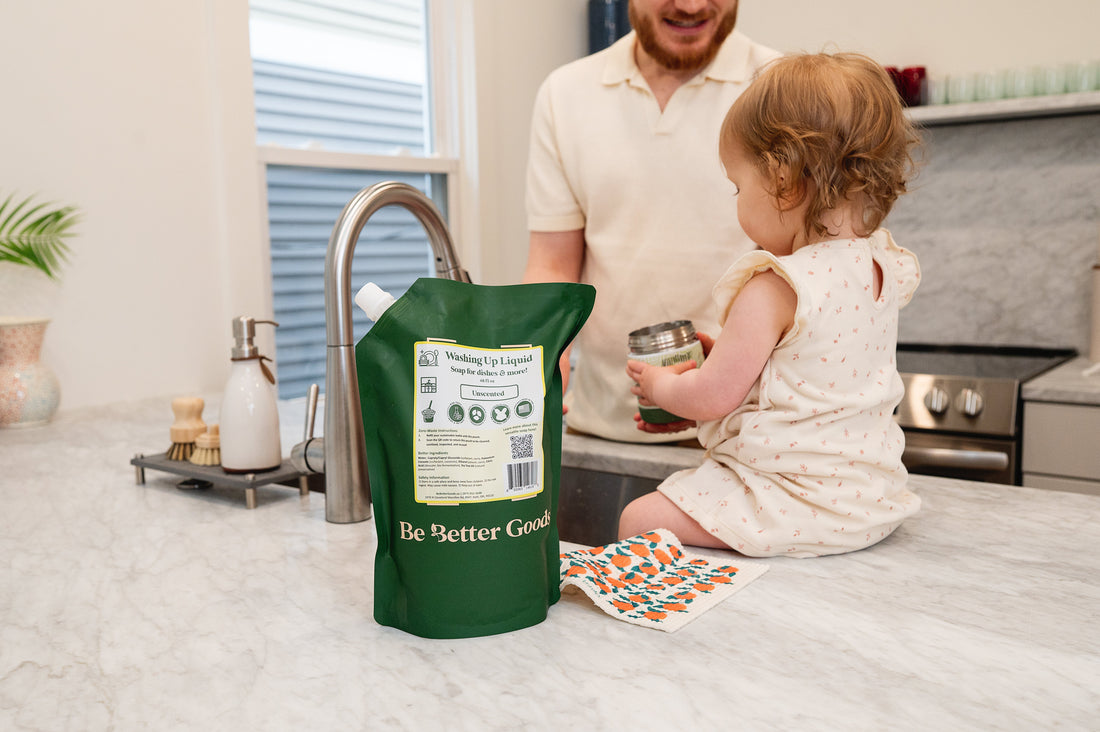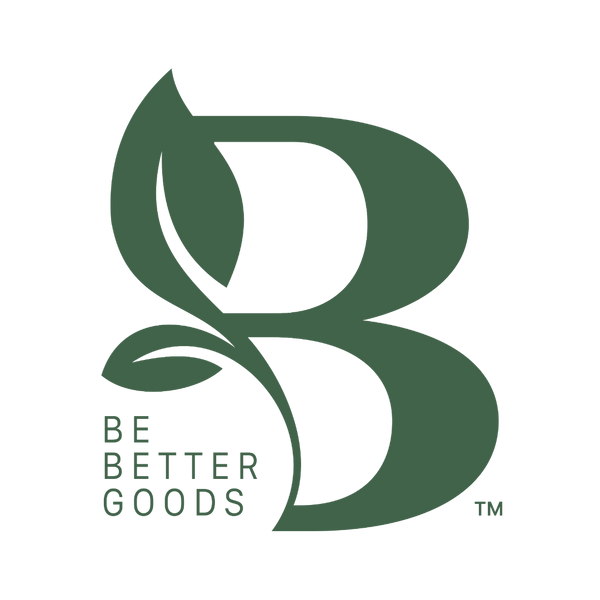
Safe Cleaning Starts Here: What Poison Control Data Taught Us
What the data tells us
Out of more than 2.4 million poison control cases, household cleaning products are the #2 overall cause, and #1 cause for children under five [1]. At least 145,000 families call the poison control hotline each year, terrified that a cleaning product they trusted is now harming someone they love.
It is unacceptable that common household products contain toxic ingredients that cause real harm.
In this post, you'll learn:
- Simple habits that prevent household cleaning accidents.
- Why confidence in product labels can be misleading.
- How Be Better Goods is proving you don't need toxic chemicals for an effective clean.
Habits that protect your family
Toxic household cleaning products are a relatively new phenomenon. Our grandparents cleaned with vinegar, natural soaps, and a lot of elbow grease. Then came the oil and gas boom of the mid 1900's, a turning point that filled our grocery store shelves with petrochemical-based cleaners.
We aren't in the fear business, our goal is to educate and empower families to make safer choices through simple, effective habits.
-
Store Smart:
Keep cleaning products in a cabinet at least 5 feet from the ground and, ideally, locked. If you store them under your kitchen and bathroom sinks (like most families), install a child safety lock. It takes one second for a kid to accidently spray themselves in the face (and don't get me started on the laundry pods that look like candy!).
-
Label everything:
Our bottles and refill pouches are always clearly labelled (and non-toxic), so if you're using our system, you're covered. But if you transfer products into other "forever bottles", be sure to label them clearly (reach out to us and I'll happily provide an extra label for you!). Aesthetics are great, but safety matters more. A simple label goes a long way in preventing mix-ups.
-
Flip the bottle:
Shopping for cleaning products isn't exciting. I get it, and I own a cleaning products company! But please, take 15 seconds to flip the bottle and look for "WARNING" or "DANGER." Under the Federal Hazardous Substances Act, brands are required to include these words if their product contains ingredients known to cause harm. For example, Lysol's All Purpose Cleaner states: "Warning: Causes substantial but temporary eye injury."
If you see a warning label, put it back. You don't need toxic chemicals to get a powerful clean, and bringing them into your home simply isn't worth the risk.
Follow these three simple habits and you'll never have to be one of the 145,000 families who call poison control about a cleaning product each year!
Why confidence does not equal safety - the psychology of labels
We can't be experts in everything. I've spent close to a decade in the Industrial, Institutional, and Household Cleaning industries and I continue to learn more every day. So it wasn't surprising when I came across a 2020 study published in Toxicology Reports that found consumers overestimate their ability to identify hazardous products [3]. This is especially true when packaging uses words like "green" or "dermatologist-tested." Even when clear hazard warnings were present, many participants ignored or misunderstood the pictograms and signal words [4].
This is not unique to cleaning products. Similar results appear across food and cosmetics too. A 2022 study in Frontiers in Nutrition revealed that consumers rely heavily on trust, color, and brand familiarity rather than label content when deciding whether a product is "safe" [5]. In other words, we buy based on perception, not proof. And the big brands know this.
This creates a dangerous gap between what consumers think is safe and what is actually safe. Well-meaning, health-conscious shoppers often unknowingly bring toxic chemicals into their home because the system intentionally makes it hard to know what to trust.
This is why making small changes like flipping the bottle, reading ingredient lists, and questioning vague terms like "fragrance" matters so much.
The Be Better Goods Difference
Let's start with the obvious: we sell cleaning products so nothing replaces habit #1: Store Smart. Even though all our formulas are non-toxic and hazard-free, no cleaning product should be ingested or sprayed near your eyes. Safety always comes first.
Here's another concept that feels obvious to us but isn't to big brands: transparency. While we're proud to display every ingredient on every label, big brands are proud to hide behind vague terms like "fragrance," "proprietary blend," and "surfactant". We believe transparency empowers you to make informed decisions about what you bring into your home.
Lastly, we are proof that non-toxic doesn't mean "less effective." We spent years testing and refining our formulas to ensure they don't just meet expectations, they exceed them. Plant-based surfactants and natural enzymes clean as effectively as synthetic petrochemicals when properly formulated.
As a family-owned business, we welcome your questions and feedback anytime at support@be-better-goods.com or on social media @BeBetterGoods.
A Better Way Forward
Keeping your family safe shouldn’t require a chemistry degree, but it does require awareness. Poison control data reminds us how important it is store products safely, read labels carefully, and choose brands that are transparent about their ingredients.
We prove every day that you don't need toxic chemicals to get an effective clean. Our non-toxic, petrochemical-free formulas and refill-return system are designed to keep your home, your family, and the planet healthier. Without compromise.
Flip the bottle. Read the label. Choose better.
Connect with us @BeBetterGoods and BeBetterGoods.co
Sources
[1] 2023 Annual Report of the National Poison Data System® (NPDS)
[2] Federal Hazardous Substances Act (FHSA) 15 U.S.C. §§ 1261–1278 (2023
[3] Hazard communication and labeling comprehension among consumers, Toxicology Reports 7 (2020)
[5] Consumer behavior and food labeling study, Frontiers in Nutrition 9 (2022)
